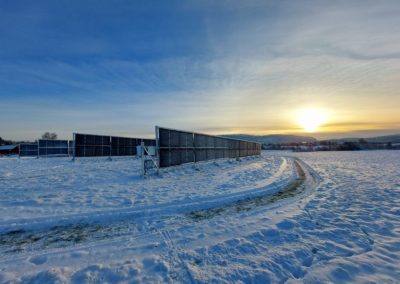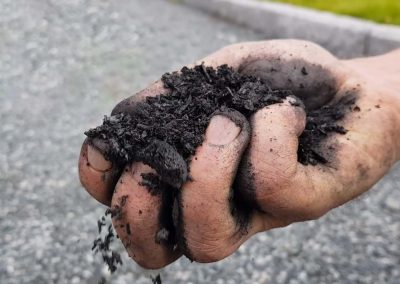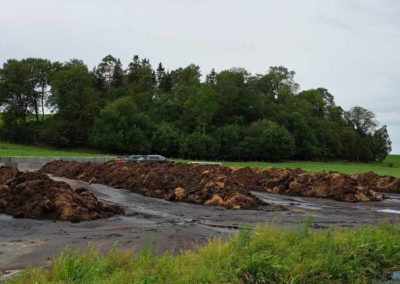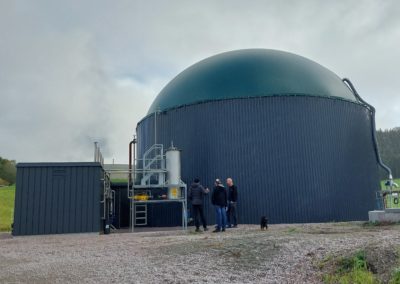How can we handle old silos, tallow and horse dung, grass residues, animal manure and tomato residues from the greenhouse in the most sustainable way possible? In RESTORE, we look at how we can utilize biochar, biogas, compost as technologies for more sustainable handling. We are also looking at how we can use biochar to reduce emissions of greenhouse gases or nutrients. Here you will find two films that quickly introduce you to what we are working on in collaboration with SINTEF, NGI and NIBIO in a project supported by the Research Council of Norway.
An introduction:
A slightly longer film:
More about the project RESTORE: research on organic resources
How can we use organic waste at Zero Emission Farm Mære in the most sustainable way possible? In the research project RESTORE, the main goal is to demonstrate how organic waste can be turned into valuable products and at the same time reduce climate emissions and waste streams. An important part of the project is to demonstrate the production of biochar, how we can produce a biochar adapted to the area of use and how biochar can be used in various ways, for example in soil, in animal manure, for purification, in fodder or in compost.
RESTORE is supported by the Research Council with NOK 3 million, is owned by Mære landbruksskole and is carried out in close collaboration with SINTEF, NIBIO and NGI.
Description of the project:
Through various research and demonstration projects, the energy system at Mære agricultural school has been deeply integrated and made more efficient over the years. The main goal of the RESTORE project is to extend the current effort from a clean energy perspective to the material level. The aim is to demonstrate full resource and energy integration at Mære Agricultural School, and work towards a local circular economy. Different types of biomass residues are produced today at Mære, e.g. residues from fields and greenhouses, food waste from the canteen and other buildings, and manure from animal husbandry.
A more sustainable and circular agriculture and forestry
The aim of the project is to demonstrate efficient resource harvesting from local agriculture and forest residues to promote the transition to a more sustainable and circular agriculture and forestry. This will be done by utilizing such resources to produce valuable products such as biochar and at the same time reduce emissions and waste streams and increase CO2 storage.
The first step in the project is to map the local resources that are available in the form of biomass residues, in order to understand the potential.
With further knowledge of this area, the next challenge will be to determine which applications biochar produced from these resources can be used for. Biochar properties depend on both raw material and production conditions. All biomass raw materials will be characterized and pyrolyzed to produce biochar. The results will be used to evaluate which combination of raw material and pyrolysis conditions is best suited for each of the possible biochar application areas at Mære LS. The figure shows how the system is interconnected and how a resource can be processed to obtain different products, and how different products can be used for different applications. Determining an optimal configuration for the system is not trivial, and the optimal solution will be found through a systematic approach using modeling and optimization tools. An important aim of the project is to ensure that the results have practical application beyond the duration of the project and the project consortium. While Mære LS serves as a basis for developing a resource integration model, this should apply to other agricultural systems, which should be able to improve their own resource efficiency and circularity.
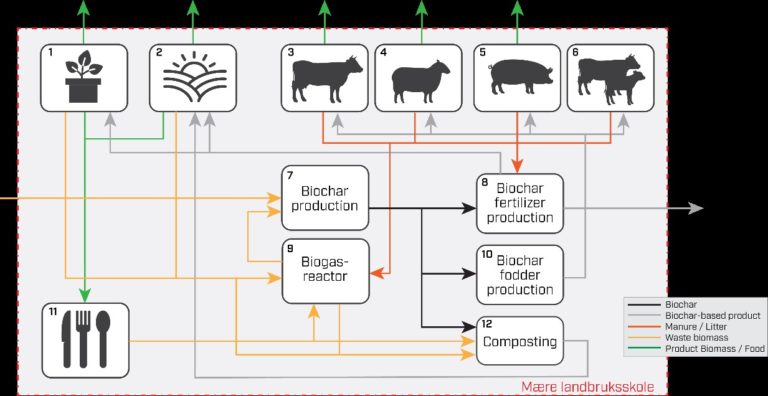
Figure 1: Resource integration at Mære LS: Crops are produced in the greenhouse (1) and the fields (2). The respective residues will be converted into biochar (7). At Mære LS there are dairy cows (3), sheep (4), pigs (5) and calves (6). Manure from animal husbandry will be mixed with produced biochar (8), thereby creating a powerful organic fertilizer that can be used in greenhouses (1) and on fields (2), replacing commercial mineral fertilizers and at the same time increasing crop yields. Remaining manure is used in a biogas reactor (9) and converted into a gas that can be directly used for heating at Mære LS. The solid residues from the biogas reactor are composted (12). Biochar can be used to improve the process, both as a composting agent and as a filtering medium for liquid runoff. The composting conditions are varied by adding parts of the residues from greenhouses and fields (1 and 2). Part of the crops produced is used in the local canteen (11). The food waste from the canteen can be fed into the biogas reactor (9). The produced biochar can also be supplemented with animal feed (10). Excess biochar-based fertilizer can be used in the area around Mære LS, e.g. in local farms and forests. Residues from these can be used for biochar production at Mære LS.

